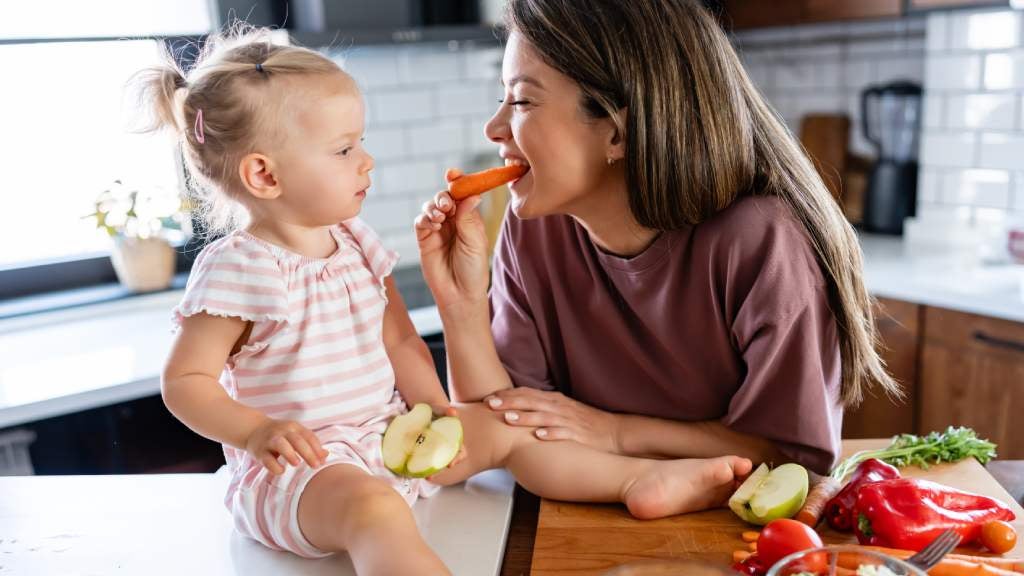How to sneak in more fruits and veggies for kids

Come dinnertime all over New Zealand, there’s a nightly battle only parents, caregivers, and babysitters know about – how to get kids to eat vegetables.
We see you, soldiers.
And we have some tips to help you reach that all-important five servings per day. We spoke to Annelies Grimshaw, Director and Nutritionist at Key Nutrition, for her advice on ensuring your kids are eating well, why it’s worth the fight, and how you can sneak a little more goodness into their diet.
Why fruits and vegetables are essential for children's health
Annalies starts by saying “Ensuring children consume enough fruits and vegetables is a common challenge for parents. Yet, these nutrient-packed foods are fundamental for their growth, development, and overall well-being,”.
She goes on to explain exactly why fruits and veg have such a good reputation: “Fruits and vegetables are powerhouses of essential nutrients that support children's growth and immune systems.”
For starters, they are rich in vitamins and minerals. “These foods provide key nutrients like vitamin C (important for immunity), vitamin A (crucial for vision and cell growth), and potassium (vital for heart and muscle function),” she states.
Another reason is because they are packed with fibre, which is great for digestive health.
“The dietary fibre in fruits and vegetables promotes healthy digestion and prevents constipation, a common issue in children.”
Not to mention, these foods have antioxidants, which can fight disease.
“Antioxidants help combat oxidative stress, reducing the risk of chronic diseases later in life.”
And last but not least, Annalies highlights one more important reason to sneak fruits and veggies into your kids’ meals: “Studies have also shown that higher fruit and vegetable consumption in childhood correlates with healthier eating patterns and reduced risk of obesity in adulthood.”
Creative ways to incorporate veggies into favourite dishes
Don’t let the tiny, adorable humans win – get some fruits and veg into their diet with these lunch and dinner ideas for fussy eaters.
Making smoothies
They’re bright, they’re delicious, and better yet, the kids can’t see exactly what’s in them.
Annalies suggests blending spinach, kale, or frozen cauliflower into a fruit-based smoothie for a serious nutrient boost.
Using fruits and vegetables as fun snacks
We’re all a little guilty of enjoying certain foods more when they’re presented as a fun snack. So this is basically just the kids’ version of a veggie platter.
Try making faces or animals out of veggies on a plate, or even the first letter of their name.
Another fun option is making rainbow skewers with bright foods such as capsicum, cherry tomatoes, and pineapple.
Engaging kids in the kitchen
Get them invested by involving them in the preparation process.
They could help choose something to try at the supermarket, or they could help with meal prep. If you have a veggie garden at home, you could even get them to help out there so they can get excited for the day you get to devour the literal fruits of your labour.
Annalies says “They’re more likely to eat what they’ve chosen or helped prepare,”.
Hiding vegetables in sauces and dips
Vegetables that don’t have strong flavours are easy to disguise in other foods.
Annalies suggests trying pureed carrots, zucchini, or pumpkin in pasta sauces, soups and stews. Similarly, zucchini and carrots both go well in muffins and pancakes. This is a great option when it comes to disguising vegetables for toddlers.
Switching up some favourites
Mac & cheese has gotten many parents through a mealtime with fussy kids. But did you know you can easily sneak in some pureed butternut squash or cauliflower for a creamy, nutrient-rich twist? You’ll be thanking Annalies for that one for years to come.
Then there’s pizza night. Both cauliflower and sweet potato can be used as a sneaky, veggie base, or you can dice some added veggies and throw them on top.
Choosing the right fruits and veggies for picky eaters
Selective eaters are common, but Annalies has some suggestions for those, too.
Start sweet
“Bananas, apples, and berries are naturally sweet and appealing to most kids,” she shares.
You can try making a start with these fruits before branching out.
Crunch appeal
Who doesn’t love a bit of crunch in their snacks?
“Offer crunchy options like baby carrots, cucumber sticks, or snap peas with a healthy dip such as hummus or yogurt.”
Experiment with texture
Annalies points out that it’s not always about the flavour – the texture is just as important for some children.
Annalies suggests “Some kids prefer cooked veggies, while others may enjoy them raw. Test out roasting, steaming, or blending to see what they like best,".
One at a time
Finally, you can introduce new options gradually. Annalies recommends pairing them with familiar foods, such as putting small broccoli florets into their favourite pasta dish.
Setting a good example as a parent
One of Annalies' important tips is to make sure you're setting a good example
“When kids see you enjoying fruits and veggies, they’re more likely to follow suit." So don’t be afraid to show your enthusiasm for a good brussels sprout (or at least put on a good show).
Though keep in mind when engaging with your children and experimenting with these vegetables and fruits, HealthEd suggests not to use rewards to encourage eating, force a child to eat, or encourage continuous snacking.
Not to mention, all this sneaking in of healthy things is a good reminder to look after your own health and wellbeing as well. While you’re looking out for yourself and your family through food choices, you can protect them through financial choices as well.
Take a look at OneChoice Life Insurance to learn more about your policy options and request a quote.
13 Jan 2025
